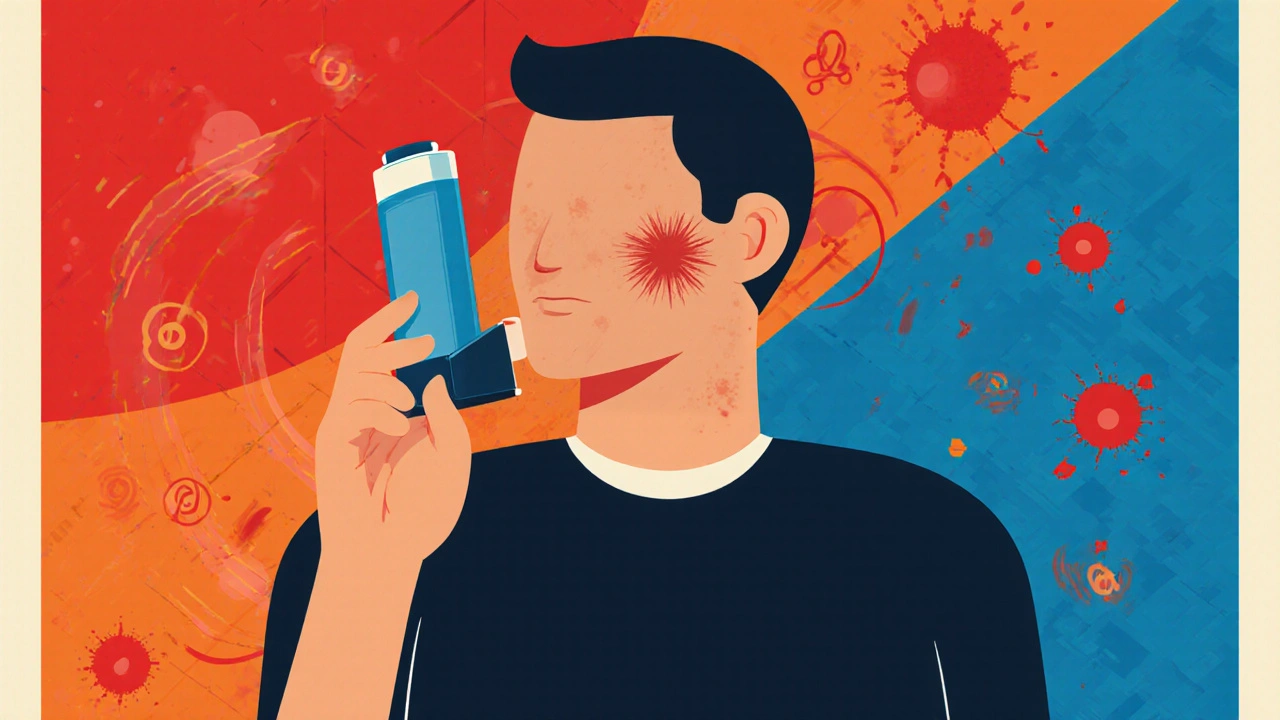Anaphylaxis: Causes, Signs, and What to Do in an Emergency
When your body overreacts to something harmless—like peanuts, bee stings, or certain medicines—it can trigger anaphylaxis, a sudden, severe, and potentially deadly allergic reaction. Also known as anaphylactic shock, it doesn’t wait for permission—it hits fast, and without quick action, it can stop your breathing or drop your blood pressure to dangerous levels. This isn’t just a bad rash or a stuffy nose. It’s a full-body emergency that can kill in minutes if ignored.
Common triggers include foods like peanuts, shellfish, and eggs; insect stings from bees or wasps; and medications like penicillin or NSAIDs. Even latex gloves or certain vaccines can set it off in rare cases. The reaction usually starts within seconds to minutes after exposure. You might feel your throat closing, your tongue swelling, or your skin breaking out in hives. Your voice may turn hoarse, your stomach may cramp, or you might feel dizzy and weak. Some people say it feels like a wave of doom crashing over them. That’s not an exaggeration—it’s your body going into survival mode, and it needs help.
Epinephrine, the only medication that can reverse anaphylaxis. Also known as adrenaline, it works by opening airways, raising blood pressure, and calming the immune system’s runaway response. Every person with a history of severe allergies should carry an epinephrine auto-injector—like an EpiPen—and know how to use it. Family, friends, teachers, coworkers—they all need to know where it is and how to give it if you can’t. Waiting for an ambulance isn’t enough. You need to act in the first few minutes.
Antihistamines like Benadryl won’t cut it. They help with mild itching or hives, but they do nothing to stop the life-threatening drop in blood pressure or airway swelling. Steroids might be given later in the hospital to prevent a second wave of symptoms, but they’re not a first-line treatment. Only epinephrine does the job fast enough.
People with asthma, eczema, or a history of food allergies are at higher risk. Kids often react to foods; adults more often to insect stings or drugs. If you’ve had even one mild allergic reaction before, talk to your doctor about getting tested. You might not know you’re at risk until it’s too late.
After an episode, even if you feel better after using epinephrine, you still need to go to the ER. Symptoms can come back hours later in what’s called a biphasic reaction. Monitoring for 4 to 24 hours is standard. You’ll likely leave with a prescription for more epinephrine, a plan for avoiding triggers, and maybe a medical alert bracelet.
The posts below cover real-world scenarios where anaphylaxis intersects with medications, allergies, and emergency care—from how certain antibiotics can trigger reactions, to what antihistamines can and can’t do, to how to recognize early signs before things spiral. You won’t find fluff here. Just clear, practical info on what to watch for, what to carry, and what to do when seconds count.
Terbutaline Allergic Reactions: Signs, Risks & What to Do
Learn how to spot, treat, and prevent allergic reactions to Terbutaline, with clear signs, emergency steps, and risk‑reduction tips.
